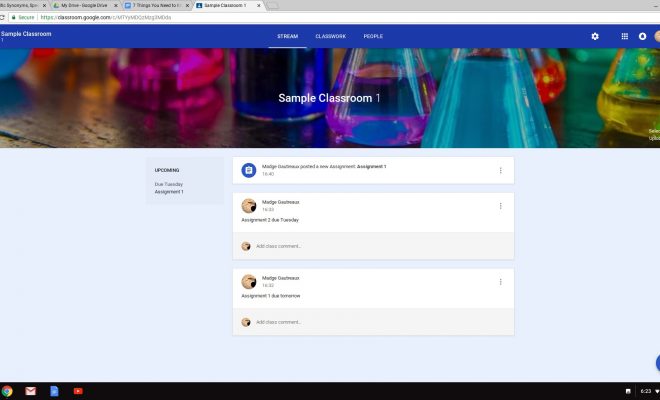The Keys to Successful Online Course Creation

If you are employed as an instructional designer, then you know how challenging the job can be. Sure, it’s easy to just throw a course together and call it online learning, elearning, or digital learning, but it takes time, effort, and skill to create a quality course. So, we wanted to write a short blog that helps instructional designers do their jobs better, by listing the keys to successful online course creation.
1. Develop a clean class outline
Letting people learn at their pace is essential, but not guiding their path will almost always guarantee their failure. Remember, small wins lead to big wins. Big wins lead to success. Creating your classes with this in mind is the path to success. That’s why your class should be straightforward in nature, and learners should readily understand how to go about achieving the promised outcomes. It helps them know exactly what is the next step to take and what they have to gain from it.
Every module and lesson should have one objective or goal. When learners know what they’re working for and how they’ll benefit from it, they are much more likely to be motivated to follow along with the class, and they will learn faster. If a module has three to five or more goals, learners can’t wrap their minds around what they’re trying to accomplish, and it’s easy for them to get overwhelmed and drop out. Contemplate splitting a lesson into two or more shorter lessons to make the path easier to follow.
2. Create an exciting learning experience
A key aspect of making a successful online class is making it rewarding and frictionless. When learners feel empowered as opposed to confused and purposeless, completion rates increase! Better organization and reduced learner friction™ are what will keep customers more content.
Here are two effective techniques to create a rewarding and frictionless experience:
- Content chunking
Content chunking is the technique of breaking content into smaller chunks that are easier to manage and learn. Small challenges or chunks are easier to handle and help learners comprehend the material faster and retain it all while exerting less effort. - Digital badges
If you want to inspire learners to finish your class, participate, and interact more with the teacher and the other learners, offering a tangible reward is an excellent method. Why? People love rewards. They want to feel unique, recognized, and essential. And if you can help them accomplish this, their self-confidence will increase, and they will be more willing to continue in your online class. How can you create tangible rewards for your learners? Start by using digital badges to reward your learners: - Provide a digital badge for class completion. People love sharing their achievements with the world and adding them to their CV.
- Offer bonus points for accomplishments. When they reach milestones, they get points. They can then turn in their points for Amazon cash, gift cards, etc.
- Design a virtual training “passport” and inspire participants to earn visas. The more modules they complete, the more visas (or badges) they receive.
3. Develop actionable class content
Although you may know a lot, resist the urge to pack your class with “nice-to-know” information. Learners want “must-know” information that they can apply to their daily lives. They want to know how to get ahead in their careers. They want marketable skills they can add to their resume.
Don’t ignore theory, but you need to find a way to connect it to the learners’ lives and make it actionable. You can do this by showing how theory can be applied to real situations, exposing case studies, finding applications in real-life issues, adding exercises, missions, and assignments to your class.
If learners can’t see how your content is relevant and don’t have a vision of what they can do with it, they will not learn it. Even if they do learn it so they can pass the assessment, they’ll likely forget about it in a short time. If they learn how to do something, they’re likely to complete the class, achieve their goals, apply the knowledge, and retain the information for a long time.
Actionable content not only tells your learners what to achieve but how to achieve it. It’s engaging, informative, and, most importantly, action-driven. Your learners bought a class instead of an eBook because they were looking for something more likely to help them achieve their desired outcomes. As a class creator, it’s your job to help them do that. You play a major role in helping your learners take action!
4. Separate your class into chunks
Many class creators feel like a longer class packed with lots of content is more valuable, but that’s far from the truth. Having too much content makes you lose customers and blurs the learning path. Remember, you want learners to come back for more, so keeping the lessons short and focused on a specific topic is vital. Breaking down a long class into smaller chunks or mini lessons that are easier for learners to digest increases motivation by giving them the feeling of progress.
The “zeigarnik effect” states that learners are more likely to remember tasks in progress than those they have completed. The zeigarnik effect indicates that people are more likely to want to complete a task once they have started it. This means that when you separate your class into small chunks, it gives learners the motivation to complete all the sections once they have started. It helps learners comprehend the content better, learn more of it, and remember it longer. It also makes each class goal clearer, more specific and easier to achieve.
So that’s it for this article. We hope that it will help you in your quest to create successful online courses. Do you have any additional tips, techniques, or strategies that you would like to share with our readers? If so, leave them in the comment section below.






